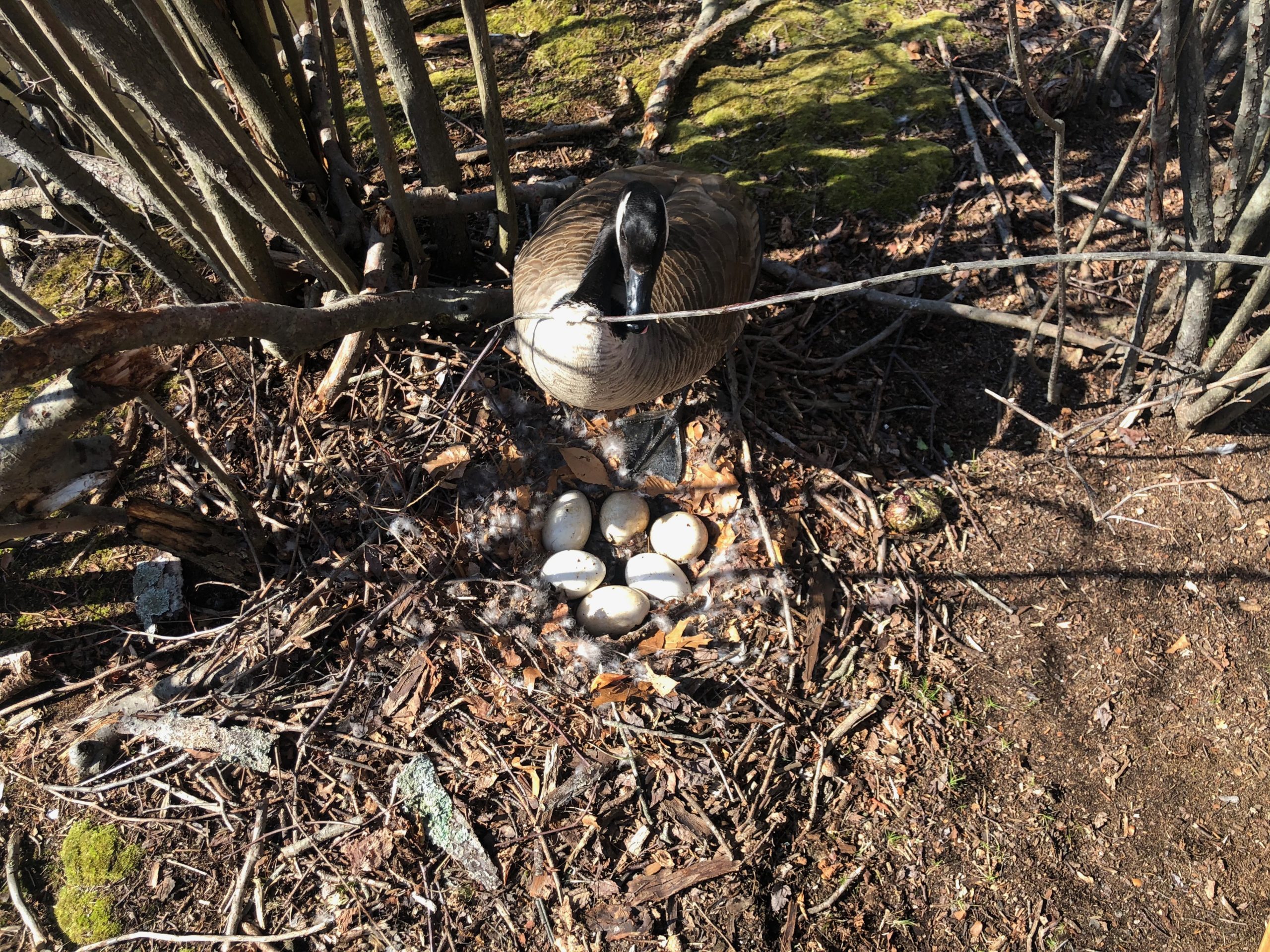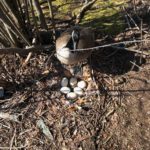A new group of residents has recently taken over actively oiling goose eggs on the three big islands of Lake Truesdale for spring 2020. This is done to control the population of Resident Canada Geese on the lake.
Egg oiling requires a permit from the Fish & Wildlife Service (FWS) which we have obtained. Truesdale Estates Association has FWS RCGR (Resident Canada Goose Registration) permit #13757A.
We can add anyone from the lake community who is interested in helping! See below for more info.

The program on Truesdale Lake started in 2008 and has been very successful in controlling the population of resident Canadian Geese on the lake. The number of geese was in the hundreds in the early and mid-2000s and the oiling program has been successful in reducing these to several dozen in the past 10 years.
In 2019 the program did not have anyone oiling the eggs and the resident geese population shot back up into the 70-80 range – and possibly more.
If you are interested in helping out, please contact us via email at lake@truesdalelake.com or via our Contact Form. The process is not too difficult and training is easy. We would need to add your name to our FWS permit before you can be involved with the oiling program.
What is egg oiling?
Egg oiling is a long-term strategy that reduces the number of resident Canada Geese on Truesdale and other lakes through 1.) physical intervention and 2.) behavior changes.
Physical Intervention
The physical intervention is the actual oiling of the eggs after mating has occurred but before the eggs have developed embryos. In our lake this typically takes place in late March or early April and can be pinpointed by observing the mating ritual of the local geese couples and finding their island nests about a week later.
Oiling works best with a crew of three working together. One person finds the nests, one person keeps the geese away from the nest, and one person oils the eggs. Oiled eggs are marked with sharpies to keep track of which ones have been treated. Records are kept for nests and eggs in each nest as a requirement of permission from the Fish & Wildlife Service.
Behavior Change
The behavior change for the geese is the most important long term consequence of oiling the eggs.
We oil the eggs rather than simply break them because if the eggs are broken the goose simply lays more eggs. However, if the eggs are oiled, the development of the egg is stopped by preventing oxygen flow into the egg. This prevents the development of the embryo.
Since the geese do not know this, they sit on the eggs for the 5-6 weeks it takes for hatching. When the oiled eggs do not hatch, the geese view it as a “failed nesting.”
Resident Geese bad, Migratory Geese good
In a successful nesting, the adults shed their flight feathers and take up residence with their new goslings on the lake.
This is NOT the outcome we want.
It is important to get all of the eggs and all nests oiled – or as many that are found. If there are enough goslings in a flock, even other members of the flock who may have had failed nestings stick around and lose their flight feathers to support the new parents in the flock. This creates a resident flock for the entire summer.
In a failed nesting, they keep their flight feathers, take off, and head further south for the summer. They do not have the time to lay more eggs and have the goslings fledge and fly before the end of the season.
This is the outcome we want.
These geese also do not develop a preference for returning to Lake Truesdale next summer and resume being Migratory Canada Geese rather than Resident Canada Geese.
Keeping the geese migratory means the problem is reduced both in the current year and in subsequent years.
Other geese will find and take up residence on Truesdale if we stop oiling the eggs, so we must keep up the program to head off more future residents.
We will also always have transient migratory geese — you can tell these geese since they are willing and able to fly away and visit other lakes since they do not have goslings to protect.
Oiling Results
In the past 10 years up to 2018, the crew of egg oilers has oiled over 100 eggs between the three islands each year. This has prevented the hatching of those eggs and has broken the resident behavior of those goose parents.
To be successful, there has to be an initial oiling treatment and a follow up oiling treatment. Timing is the key to successful outcomes.
Egg oiling has made a huge difference in controlling the resident goose population on Lake Truesdale.
When we first moved here in 1999, we would arrive home to 60-80 geese/goslings on our lawn. There was easily double or triple that number on the lake. Lawns were covered in goose droppings. The beaches were favorite spots for goose gatherings. I have photos (deep in the archive) that I can dig up in case you think I am egg-agerating.
We have gotten it much more under control relative to those days — but we can always do better. Will you step up to help?


